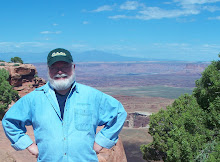Nevertheless, with all the caution given to me by these three trusted people, I decided that when I wrote, I would have crosses around to ward off any attacks by Evil. Where to get crosses? I stopped in the local Hallmark Shop for a Birthday Card and gravitated to an area of the store that had Angels and Crosses and other confirmation types of gifts. I walked out with three crosses. The small wooden cross went in the carrying case for my flash drives since that is the primary storage unit for my books. A white stone with a something of a Cathedral Cross on it stayed on or near my laptop--my primary writing tool--as I would type on it. Finally, I would pin the Celtic Cross Tie-Tack to my shirt pocket.
This was my practice for the first chapter--"The New Playroom," where the main character and the supposed agent of the Devil meet; also, in the fifth chapter which has two ghosts among the characters; again,in the fifth chapter, from whence the title of the book is derived; and finally, the last chapter, which takes place mainly in a cemetery where crows are flying in formations of three.
In the various places that I wrote--mostly restaurants with an inexpensive breakfast in the morning and then on to the local library in the afternoon--no one asked about what I was doing or why I had the crosses; that was fine with me.
When I stopped writing for the day, all crosses went into my computer carrying case, except the white one, which went to my desktop while I transferred the day's work to my hard drive. Even though the manuscript is finished, the three crosses as still in my computer case because that is where I keep the flash drive, where the original writing was done.






.jpg)












